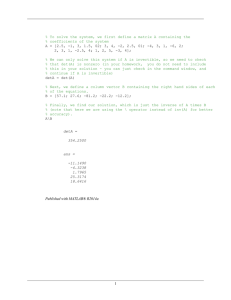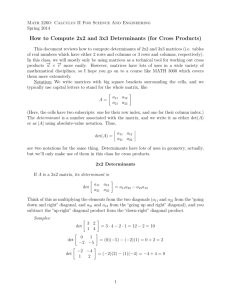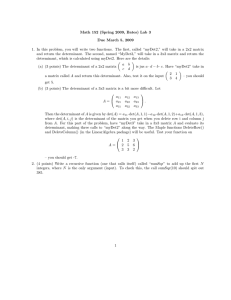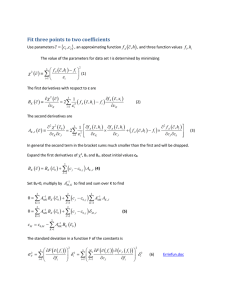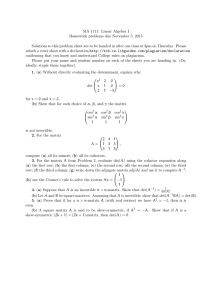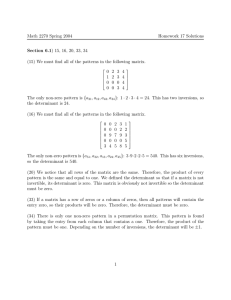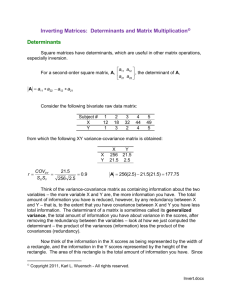MATH 2360-D01 WEEK 5
advertisement
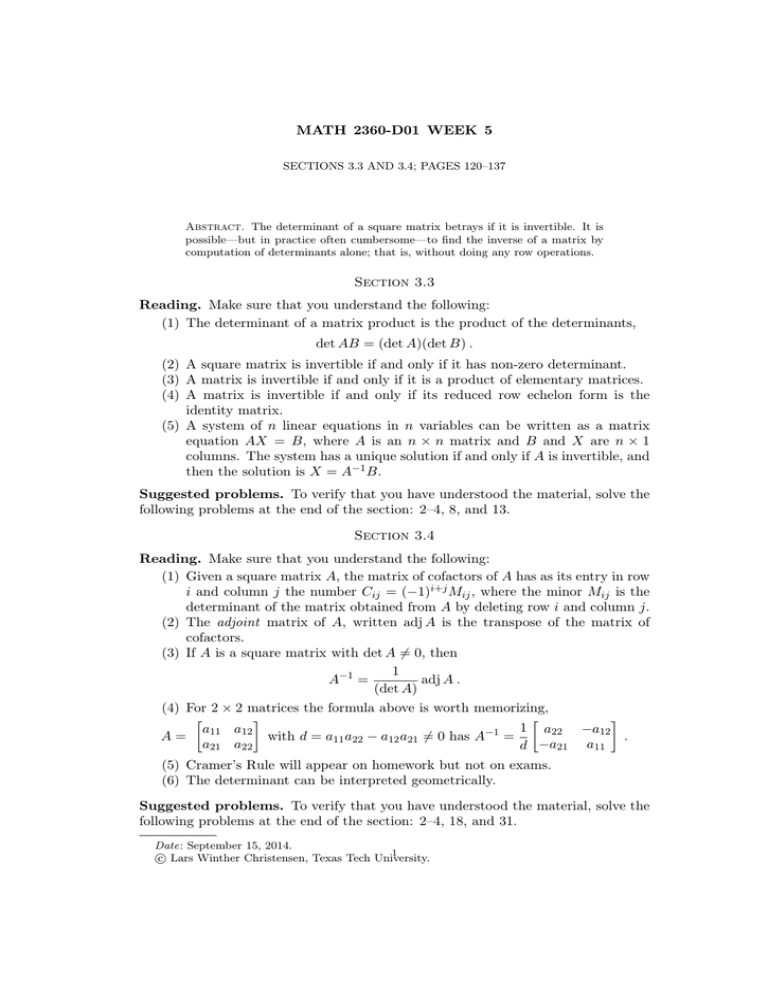
MATH 2360-D01 WEEK 5 SECTIONS 3.3 AND 3.4; PAGES 120–137 Abstract. The determinant of a square matrix betrays if it is invertible. It is possible—but in practice often cumbersome—to find the inverse of a matrix by computation of determinants alone; that is, without doing any row operations. Section 3.3 Reading. Make sure that you understand the following: (1) The determinant of a matrix product is the product of the determinants, det AB = (det A)(det B) . (2) A square matrix is invertible if and only if it has non-zero determinant. (3) A matrix is invertible if and only if it is a product of elementary matrices. (4) A matrix is invertible if and only if its reduced row echelon form is the identity matrix. (5) A system of n linear equations in n variables can be written as a matrix equation AX = B, where A is an n × n matrix and B and X are n × 1 columns. The system has a unique solution if and only if A is invertible, and then the solution is X = A−1 B. Suggested problems. To verify that you have understood the material, solve the following problems at the end of the section: 2–4, 8, and 13. Section 3.4 Reading. Make sure that you understand the following: (1) Given a square matrix A, the matrix of cofactors of A has as its entry in row i and column j the number Cij = (−1)i+j Mij , where the minor Mij is the determinant of the matrix obtained from A by deleting row i and column j. (2) The adjoint matrix of A, written adj A is the transpose of the matrix of cofactors. (3) If A is a square matrix with det A 6= 0, then 1 adj A . A−1 = (det A) (4) For 2 × 2 matrices the formula above is worth memorizing, 1 a22 −a12 a11 a12 −1 . A= with d = a11 a22 − a12 a21 6= 0 has A = a21 a22 d −a21 a11 (5) Cramer’s Rule will appear on homework but not on exams. (6) The determinant can be interpreted geometrically. Suggested problems. To verify that you have understood the material, solve the following problems at the end of the section: 2–4, 18, and 31. Date: September 15, 2014. 1 c Lars Winther Christensen, Texas Tech University.

